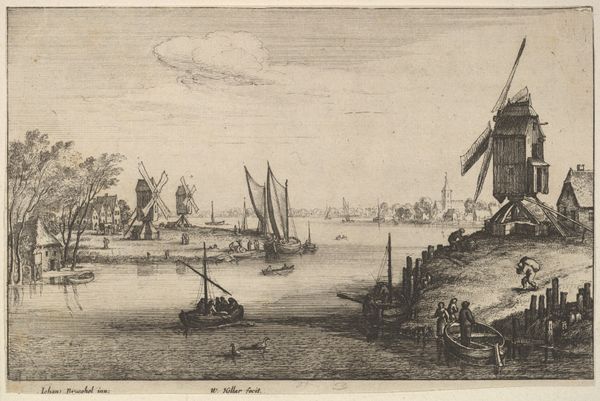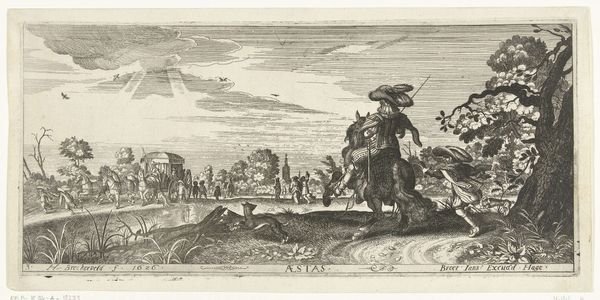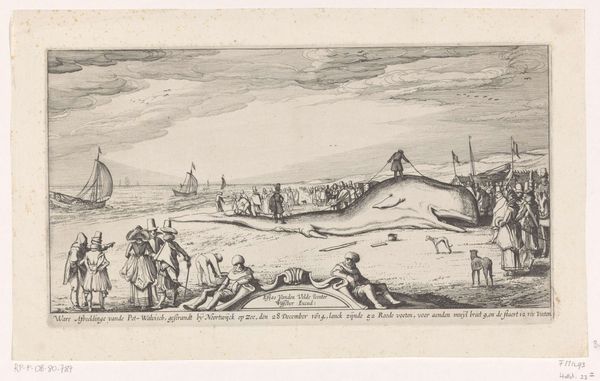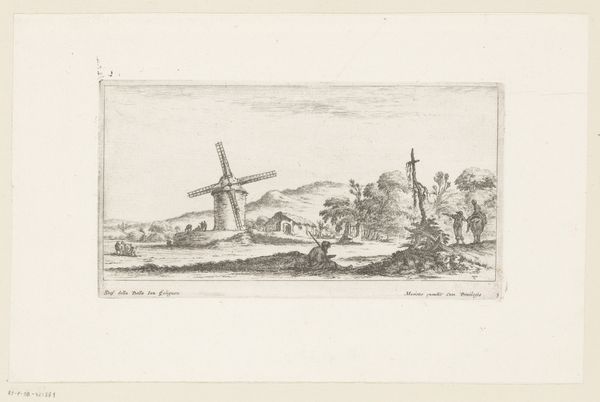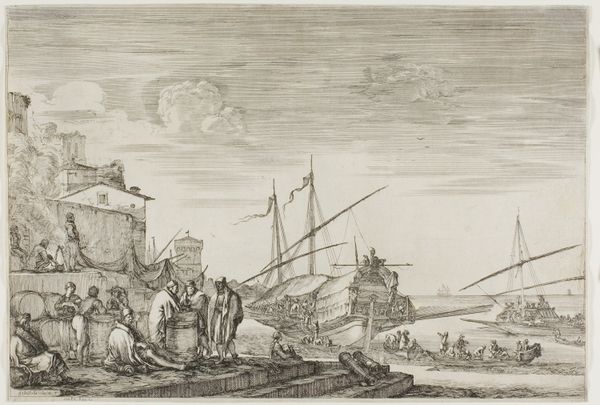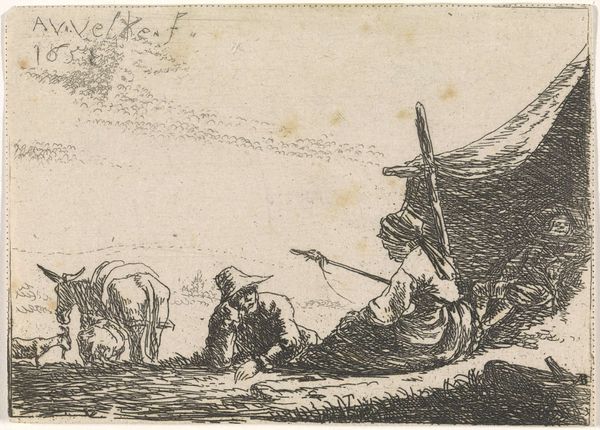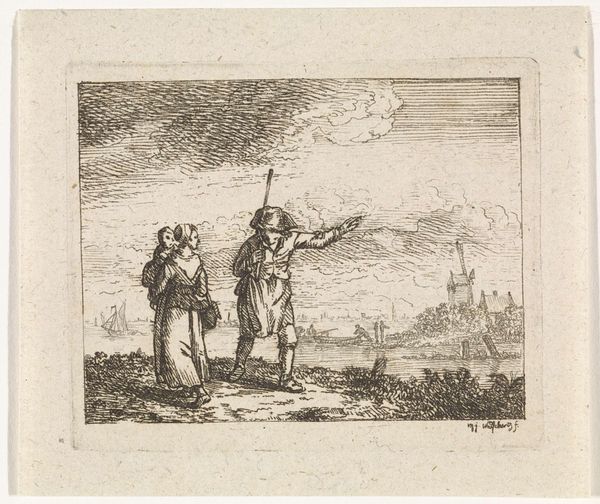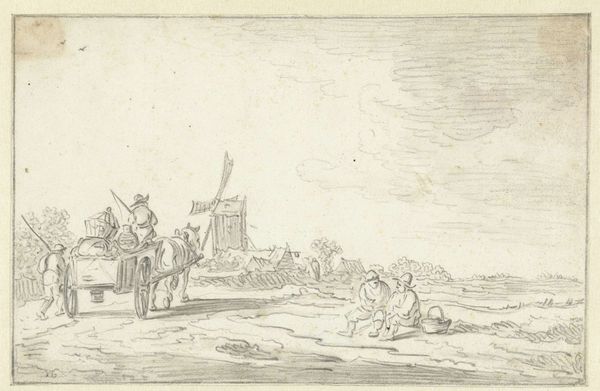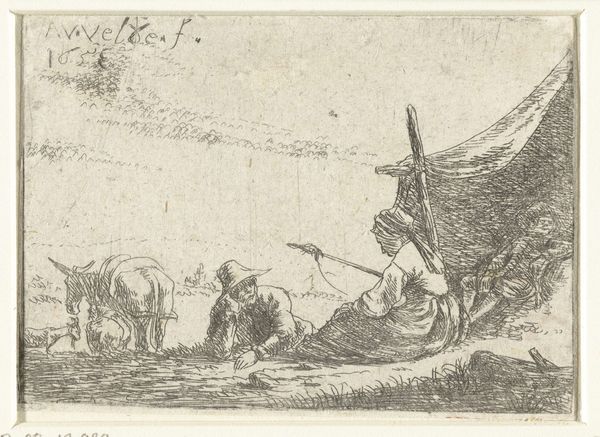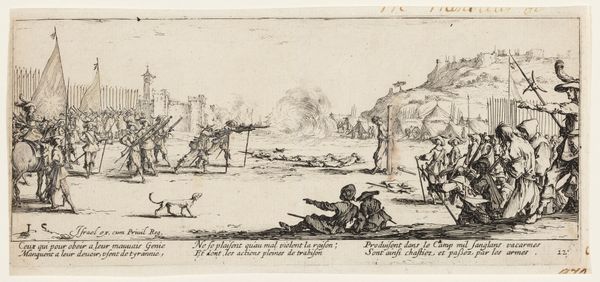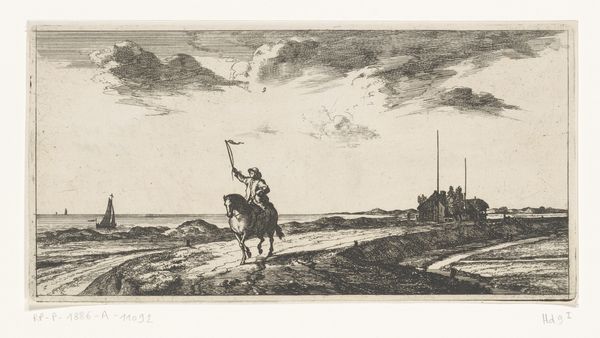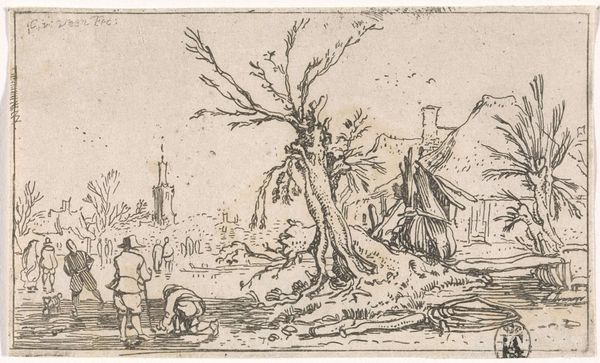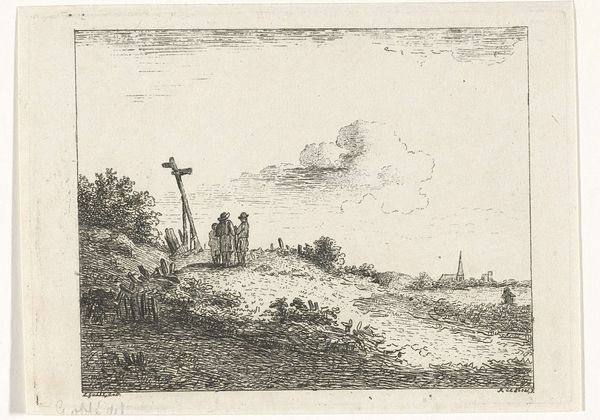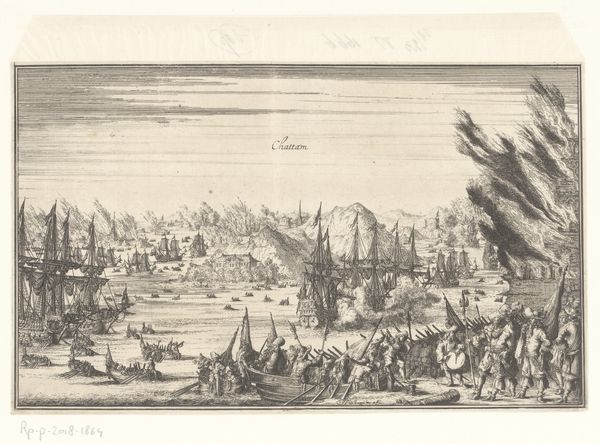
Plate 5: A Pikeman standing at right next to a canon, other military figures in the background, from 'Various Military Caprices' (Varii capricci militari) 1636 - 1646
0:00
0:00
drawing, print, etching, engraving
#
drawing
#
weapon
#
baroque
# print
#
etching
#
landscape
#
soldier
#
men
#
history-painting
#
engraving
Dimensions: Sheet (trimmed to plate): 3 3/8 × 5 9/16 in. (8.6 × 14.1 cm)
Copyright: Public Domain
Stefano della Bella made this print – Plate 5 from ‘Various Military Caprices’ – using etching, a printmaking technique, sometime in the mid-17th century. To make an etching, a metal plate is coated with a waxy, acid-resistant substance called a ground. The artist then draws through the ground with a sharp needle, exposing the metal beneath. The plate is immersed in acid, which bites into the exposed lines, creating grooves. The deeper the bite, the darker the line will appear in the print. Ink is applied to the plate, filling the etched lines, and the surface is wiped clean. Finally, paper is pressed against the plate, transferring the ink and creating the print. Look closely, and you can see the economical but evocative lines della Bella used to create this scene of military life, with a pikeman standing next to a cannon. The printmaking process, like military activity itself, involves careful preparation, technical skill, and a degree of controlled aggression. By mastering this process, artists like della Bella could disseminate images widely, contributing to the circulation of ideas and visual culture in early modern Europe. So, next time you look at a print, remember that it’s not just an image, but also the result of labor and technical know-how.
Comments
No comments
Be the first to comment and join the conversation on the ultimate creative platform.
